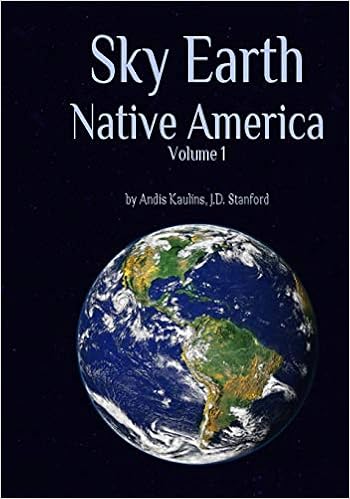We are dependent on good graphics software for certain aspects of our online presence so that we are interested in new program developments in this field.
The open source desktop graphics software program Krita for Microsoft Windows -- an eyeopener as a free digital painting program targeted for artistic use -- came out in a new version in December of 2016 and is available under the GNU General Public License.
It can be downloaded at krita.org/en/. Once downloaded, the English-language user interface can be changed to any of the numerous other languages in the main menu under Settings / Switch Application Languages.
The Krita menus can be customized via the main menu at Settings / Configure Toolbars. For example, we added a "back" icon to the menu, which we use when drawing.
The standard graphic interface may be too dark for some users and can be changed at the main menu under Settings / Themes. The available themes are Breeze Dark, Breeze High Contrast, Breeze Light, Krita Blender, Krita Bright, Krita Dark (the default theme) and Krita Neutral. We prefer dark print on a lighter background so we chose Krita Bright, but it is a personal decision.
The "canvas" background can be changed at Settings / Configure Krita / General / Window / Window Background. We changed from black to the hex color code #ababab. That is the practical background color for Paint Shop Pro 7 which we have used for years. There is also a separate color setting for the canvas border at Settings / Configure Krita / Display / Canvas Border.
A program for picking any colors from the screen that one may want to use in a program like Krita is something like the color picker Instant Eyedropper.
Caveat Emptor: Our above review of Krita is made solely for providing information about Krita and is not a recommendation, nor do we make any guarantees about the program, with which we are not affiliated in any way.
"Where there is no vision, the people perish: but he that keepeth the law, happy is he."
-- Proverbs 29:18, King James Bible (KJV)
-- Proverbs 29:18, King James Bible (KJV)
Monday, January 09, 2017
Patents, Copyrights, Net Neutrality, Innovation and the Law are Featured at Stanford Lawyer Magazine
Lawyering, IP, Net Neutrality, Innovation and the Law are featured at the current Stanford Lawyer Magazine, Issue 95, Fall, 2016, which we receive quarterly as a Stanford Law School alumnus, and which is found online at https://law.stanford.edu/stanford-lawyer-magazine/.
The cover article by Stanford Lawyer Editor Sharon Driscoll is about
Innovation and the Law : IP and Net Neutrality Fuel Creativity and the Economy. Inter alia, Driscoll writes:
Lawyering at the Edge of Innovation: A Conversation with Kent Walker [Stanford JD '87], Google's General Counsel and Senior Vice President, a question-and-answer interview of Walker, a Stanford Law School graduate, by Lisa Larrimore Ouellette, Assistant Professor of Law at Stanford Law School. A sample statement by Walker out of that interview:
Take a look.
The cover article by Stanford Lawyer Editor Sharon Driscoll is about
Innovation and the Law : IP and Net Neutrality Fuel Creativity and the Economy. Inter alia, Driscoll writes:
"While network neutrality is about the architecture of innovation, intellectual property rules like patent law, trademark, and copyright are about the innovations themselves."Stanford Lawyer Legal Matters follows with
Lawyering at the Edge of Innovation: A Conversation with Kent Walker [Stanford JD '87], Google's General Counsel and Senior Vice President, a question-and-answer interview of Walker, a Stanford Law School graduate, by Lisa Larrimore Ouellette, Assistant Professor of Law at Stanford Law School. A sample statement by Walker out of that interview:
"The Supreme Court’s decision in Alice ... was useful in analyzing the question of patentable subject matter and setting out a framework for how to assess whether or not a patent has made a unique and non-obvious contribution to the art."Stanford Lawyer Perspectives has an essay by Kevin Patrick Gibson [JD '17] on Empirical Study of Patent Troll Litigation Practicum, where Gibson writes:
"Our general findings so far indicate that litigation growth in the past 15 years is due largely to the rise of PAE-initiated lawsuits. These lawsuits tend to involve software patents and they resolve much more quickly than other lawsuits, lending credence to the theory that PAEs often assert with the goal of extracting quick money from defendants.Stanford Lawyer Online Features focuses on Stanford Law School's Copyright Licensing Practicum:
"[Paul Goldstein, the Stella W. and Ira S. Lillick Professor of Law at Stanford Law School ("SLS"] "has overseen a partnership between SLS and the United States Copyright Office to protect copyright owners while allowing the flow of information to remain relatively unfettered". [The result has been creation of] "a prototype for licensing photographs".This is obviously an interesting issue for intellectual property questions but there are also addtional Stanford Lawyer articles on privacy, veterans treatment, criminal investigations, virtual law practice, class action litigation, public research and leadership in education, and peer review in government.
Take a look.
Subscribe to:
Comments (Atom)
°°°°°°°°°°°°°°°°°°°°°°°°°°°°°°°°°°°°°°°°°°
Native American Rock Art Petroglyphs Pictographs
Deciphered as Land Survey & Astronomy by Andis Kaulins
paperbacks in color print
Volume 1, 2nd Edition, 266 pages
ISBN: 1517396816 / 9781517396817
Volume 2, 2nd Edition, 262 pages
ISBN: 1517396832 / 9781517396831
Sky Earth Native America Volume 1-----------Sky Earth Native America Volume 2
by Andis Kaulins J.D. Stanford by Andis Kaulins J.D. Stanford
(front cover(s))
 ------
------
(back cover with a photograph of the author and book absract text)
